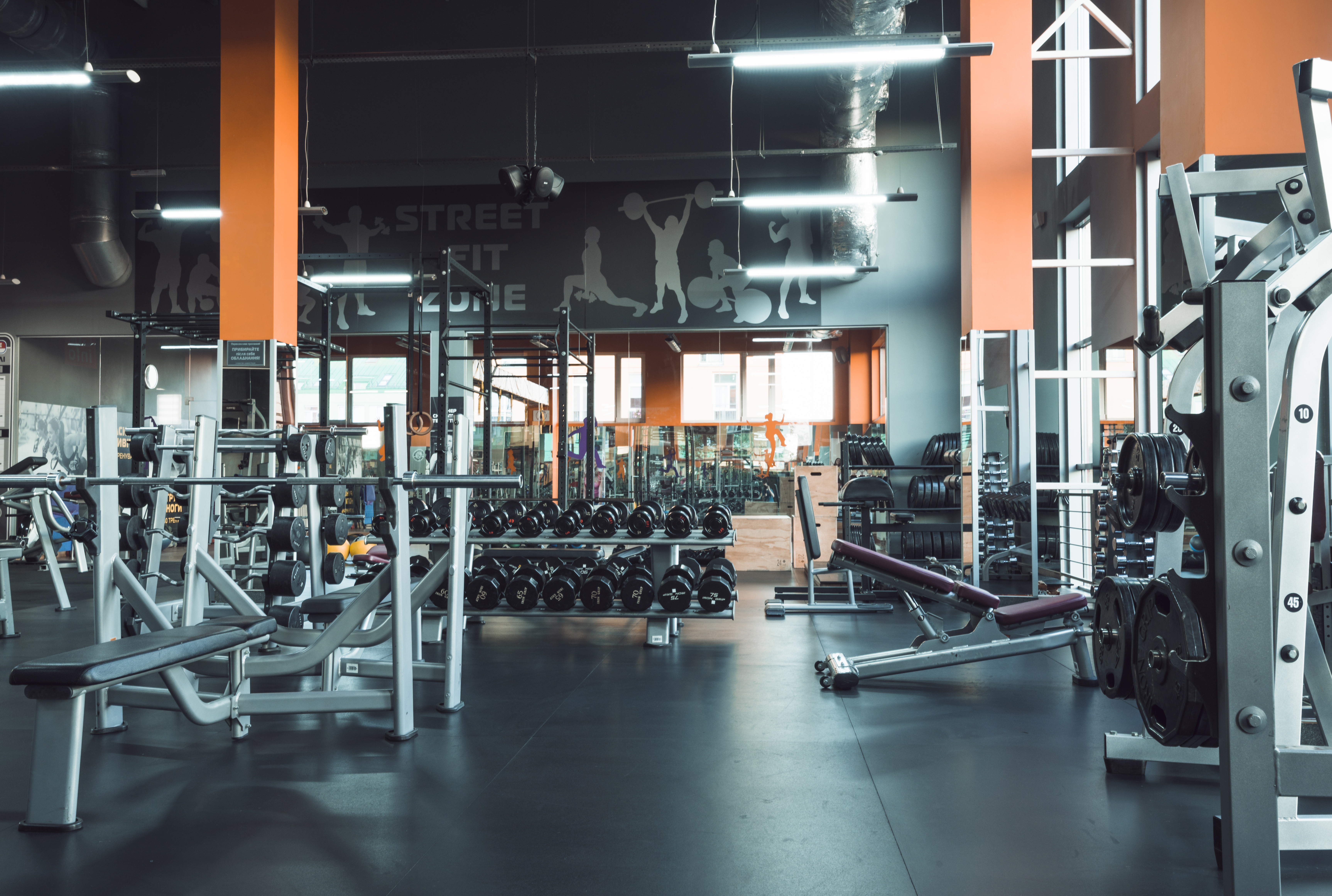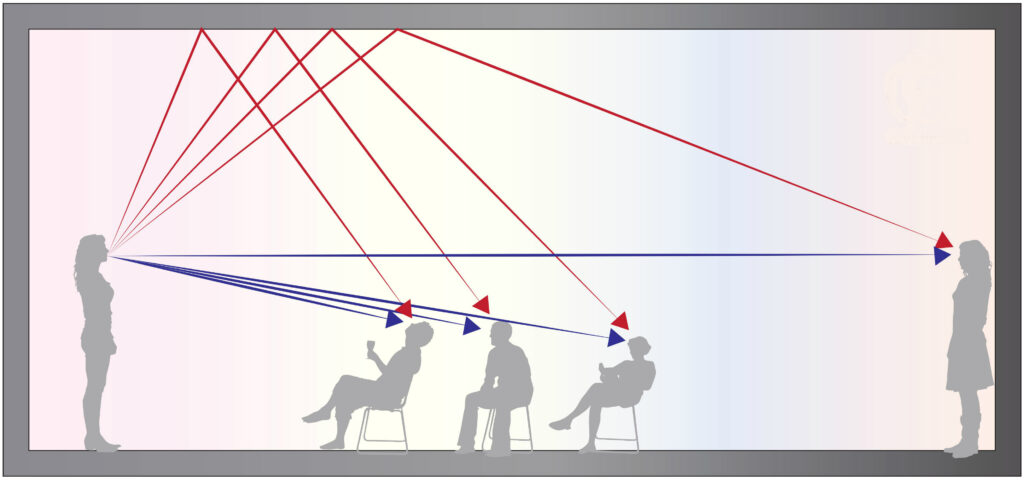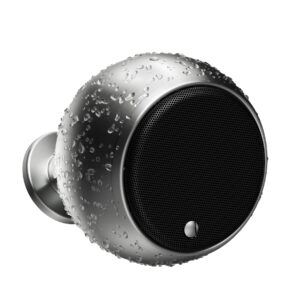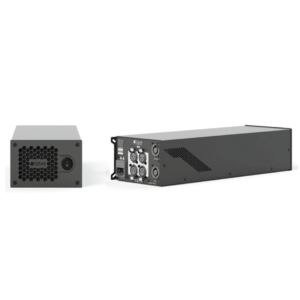
Last April, the Council of Ministers approved a decree-law introducing urgent measures for the gradual resumption of economic and social activities in compliance with the requirements to contain the spread of the COVID-19 epidemic. Among the novelties, gyms, wellness centres and indoor swimming pools reopened a few days ago: sports facilities where a PA sound system is almost always present for the diffusion of music, not only in the background, but aimed at improving the quality of the athletes' training and performance. Very often considered a marginal element in the design and realisation of spaces for sporting activities, acoustics first and foremost and the quality of the sound system are instead fundamental elements to guarantee the well-being of those who share these spaces, always respecting the manager's directives.
The problem of reverberation

To overcome this problem, the first aspect to consider would be the acoustic treatment of the premises for those establishments whose members are able to bear the costs.
At this time of reopening of sports centres, when spaces must be rethought and adapted to ensure the resumption of activities under the banner of safety while avoiding risks to people's health, it is important not to neglect acoustics and to intervene on this front to ensure that athletes can train in the best possible conditions, also in terms of comfort. Regardless of this aspect, we analyse below the most suitable audio solutions for soundproofing these environments in the best possible way.
Sound systems for gyms
Gyms have a variety of environments, each with different sound requirements. For example, those for indoor cycling, running, cross fit, yoga and holistic disciplines, relaxation, etc.
In a cycling hall, where many bikes are used, music helps with the effort, maintains the rhythm of pedalling, and relieves fatigue and boredom in repeating the same movements over and over again. In order to meet these demands, it will obviously have to be played at high volumes, undistorted and with considerable impact. Not only will the volume be high, but also the quality will have to be no less.
For this kind of use, the most suitable speakers are those for PA, such as the KGEAR GP1812APerhaps a stereo pair placed in front of the spinners in the DJ area. This type of loudspeaker, consisting of a 12" high-efficiency coaxial loudspeaker + 18" subwoofer and amplified by a Powersoft power amplifier with DSP, are capable of generating a sound pressure close to 130 dB at a distance of one metre, a value that stimulates physical performance and contributes to an energy boost. On the other hand, running rooms, intended for training with treadmills or those for muscle strengthening with equipment such as multifunctional benches, Swedish wall bars, barbells, weights, etc. have different requirements. Music is always in the foreground, of course, with speaker systems designed to provide the best coverage of the area.
In this case, the most suitable solution is acoustic loudspeakers, perhaps to be installed in the ceiling so as not to occupy floor space, but always characterised by a high SPL as these are environments in which music is not background music, but is itself part of the training course. The number of loudspeakers depends on the area you want to cover. At the basis of it all are measurements (the reverberation time, also called T60 or simply RT) and the estimation of the different acoustic components required. On the basis of this data, wiring plans are made, the position and above all the type of loudspeaker to be used is determined, as well as the complete system arrangement, i.e. everything upstream (sources, amplification system, mixer, etc.). The GS6 of KGEAR lend themselves to this purpose, also thanks to the practical bracket that allows them to be installed on the ceiling and oriented as required.

For yoga and holistic disciplines, which generally take place in large rooms, reproduction can be more critical due to problems with reflections from the walls, ceiling (especially if low) and floor. In this case, line source (column) loudspeakers are ideal. Using the principle of the line array, they have a high directivity in the vertical plane, generating an emission that does not disperse energy on the floor or ceiling and thus, in fact, limiting problems due to reflections. Two systems with corresponding subwoofers may be sufficient, in effect a 2-channel stereo system. In the relaxation areas and changing rooms of gyms, music is normally played in the background. In these cases, in-ceiling speakers or small loudspeakers that reconcile design and sound reproduction quality are preferred. They range from models such as the KGEAR GF4 two-way, which are also available in a white version to better match environments of the same colour, to even more refined design solutions such as the Gallo A'Diva which compared to the Micro model offer a more extended bass range and therefore do not require the use of a subwoofer.
With the added bonus of an even wider choice of colours and finishes... Here too, wall brackets or pendant versions (such as the Droplet of the same brand) facilitate installation.
Wellness centres and spas
The soundproofing of a wellness centre is essentially based on the same concepts that we have seen for the relaxation areas of fitness centres, i.e. the possibility of playing background music from a series of loudspeakers to be arranged appropriately in the room in such a way as to be as aesthetically unobtrusive as possible, guarantee a good coverage area and decent sound quality. For the two models from KGEAR and Gallo Acoustics that we mentioned above, it is important to point out that they are passive speakers and therefore require an external amplifier to drive them, and this is where the whole question of load impedances comes into play as you cannot put any number of speakers in parallel without taking into account the fact that every time you double the number you halve the impedance.
In addition, power amplifiers may or may not be equipped with DSP, i.e. digital signal processor. The DSP present in the KGEAR GA43 e GA46 allows the use of presets with equalisation curves specifically designed to optimise their coupling with the loudspeakers, making life easier for the installer, who can also count on the possibility of using the control interface to operate via software and thus manage the settings of each parameter: general, inputs/outputs, presets and equalisation. The KGEAR GA201on the other hand, does not have it and can operate in stereo or mono bridged mode, doubling the power.
In spas, which differ from wellness centres in that only water-based, thermal or sea water treatments are performed (hence the name SPA, salus per aquam), it is advisable to adopt diffusers that conform to a waterproofing standard (e.g. IP66), which allows them to be used in these environments or in any case where there is a high level of humidity. Gallo Acoustics has developed a specific product line for this purpose called Habitat , made entirely of stainless steel, with an IP66 rating, derived from the 4″ and 5″ spherical shapes of the classic Micro and A'Diva loudspeakers.
Swimming pools and sports centres
We have seen that music is an integral part of the implementation of sports facilities, which include swimming pools and sports centres. The first aspect to consider is related to the environment (closed/open) and the second to the type of audio you want to broadcast (music, speech or both). Closed and large environments are very reverberant, we all have experience of this and we know that the intelligibility of speech during a swimming competition, for example, is often very low. And music, unfortunately, often unlistenable. In an open-air facility this problem does not exist, as no reflections are generated, but on the other hand there is sound dispersion that can require very high listening volumes. In closed rooms and for background music, recessed loudspeakers specially designed for use in environments with very high temperatures and humidity levels can be used.
When the requirements are different, for example in the case of water aerobics and aerobics, where music is a fundamental element as it makes the lessons more fun and dictates the rhythm of the movements, transforming them into real choreographies (typical example is synchronised swimming), a more sophisticated sound system is needed. Generally, those are not used for fixed installations, but for rental, as they must be easily moved once the lesson is over, restoring the pre-existing environment so that classes can continue as normal. A system such as the KGEAR GP8Aless expensive, powerful and demanding than the GP18, but equally performs well in acoustically critical environments. What's more, its IP54 certification allows it to be used even in the presence of splashes that can occur at the poolside.
When the diffusion of music does not have the function of mere sonorisation of spaces but constitutes an attraction or attraction for customers, in outdoor environments the use of high-efficiency line arrays can be considered: a typical case is that of concerts in swimming pools during summer evenings. KGEAR produces subwoofer-based systems with two 18" loudspeakers and a passive mid-high section with 4 or 2 coaxial 12" drivers in array configuration. Thanks to a Powersoft™ DSP Class D amplifier module integrated in the subwoofer and the Armonia™ control software, a system can be driven GPX o GPZ passive in stereo/dual mono, resulting in four acoustic speakers in the corners of the pool for a visceral disco impact.


